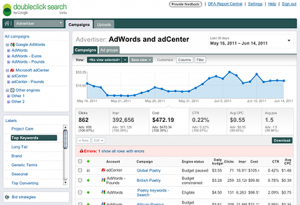Simplifying Tag Tracking: The Universal Tracking Container
Every web analytics provider requires nearly the same setup process: pixels. A couple lines of JavaScript pasted onto the pages of a website provide data critical to any optimization process, attribution model, or consumer behavior analysis. As part of my role includes integration engineering for an analytics vendor, I spend a substantial amount of time […]
Every web analytics provider requires nearly the same setup process: pixels. A couple lines of JavaScript pasted onto the pages of a website provide data critical to any optimization process, attribution model, or consumer behavior analysis.
As part of my role includes integration engineering for an analytics vendor, I spend a substantial amount of time writing, testing, and validating tags to ensure our clients are capturing the appropriate data. But even after all my work is QA’d, it can take days or in some cases, weeks for the tags to be placed into production on an advertiser’s site. Why?
Universal Tracking Containers
Advertisers engage with technology vendors to improve efficiency and drive revenue. As a result, vendor integration delays have a high opportunity cost caused by the web development (webdev) queue directly associated with lost revenue. This is where DART’s analytics system got it right: the floodlight container tag.
The concept is painfully simple – DART provides a universal tracking container in the form of a pixel which, when called, displays the code for all pixels stored within the container. Once webdev installs the container pixel into production, program managers can easily manage the floodlight container without any webdev involvement.
There are independent providers of universal tag containers, but no other analytics system has such a clean and convenient environment to add and remove vendor pixels.
DART Limitations
Unfortunately, it is this author’s opinion that DART is not the most comprehensive and intuitive tool on the market. There are several systems that are easier to navigate and learn, including the free alternative, Google Analytics.
But these shortcomings can be overlooked for certain companies suffering from bureaucratic inefficiencies such as significant delays for jobs like posting a new tracking tag. So two questions bubble to the surface:
- Is DART worth the money?
- Why aren’t other analytics providers offering a product similar to the floodlight container?
In determining if DART is worth the money, it depends who you ask. If pixel implementation is severely hampering your productivity, then it’s a valid option to consider.

Doubleclick Search v3
It’s worth noting that Google has been investing heavily in Doubleclick Search as shown by the recent user interface lift, DS3.
It’s AdWords with the additional capability to manage AdCenter and other search engines.
The core add-value propositions are:
- Familiar AdWords UI
- Native Integration with DART and Google Analytics
- Bid Strategies
Having spent extensive time in 3rd party search management tools, DS3 is not reinventing the wheel nor providing much beyond removing the learning curve for AdCenter and putting everything in an AdWords UI, which is nice but not necessarily worth the price.
So unless you need the floodlight tag, DART and DS3 are not the best, nor the cheapest solution on the market.
What About Other Analytics Providers?
The more important question is: why aren’t other analytics providers creating a floodlight tag-esque product?
In my experience, troubleshooting or updating pixels, the floodlight environment allows for instant updates and a 15 minute lag between update and post to production. On a high volume site, this is unparalleled risk mitigation and resolution power directly in the hands of the program manager.
As I previously mentioned, there are businesses specializing in universal tracking tag management systems but they aren’t natively integrated into an analytics system. This means more systems to manage, URL parameters to add, and more cookies/pixels to ensure the proper pixels are called when a visitor engages with your site.
Conclusions
It seems all too logical: a holistic tracking system designed to make clients more self-sufficient. While companies like Adobe Omniture would miss out on those $1,500 development fees for new tag placement and creation, outsourcing this process could even save money as fewer internal resources would be required to handle one-off jobs as advertisers become more DIY.
Hopefully, the other major players – Omniture, Google Analytics, Web Trends, Core Metrics, Channel Advisor, and new systems coming out take heed and empower the program manager, further allowing analytics to move at the speed of the marketer, not the developer.
Opinions expressed in this article are those of the guest author and not necessarily Search Engine Land. Staff authors are listed here.
Related stories
New on Search Engine Land